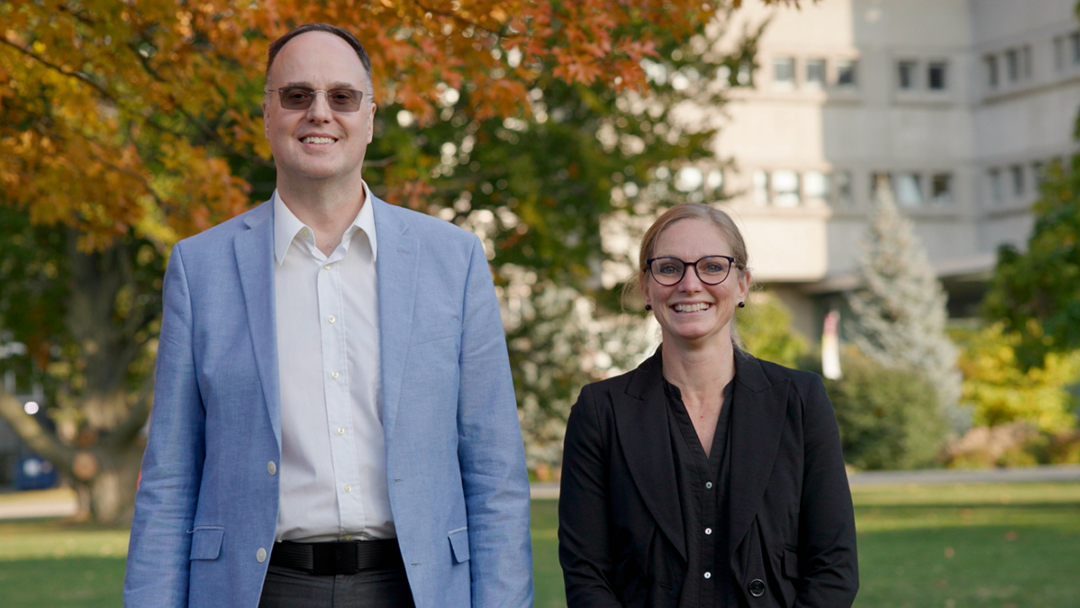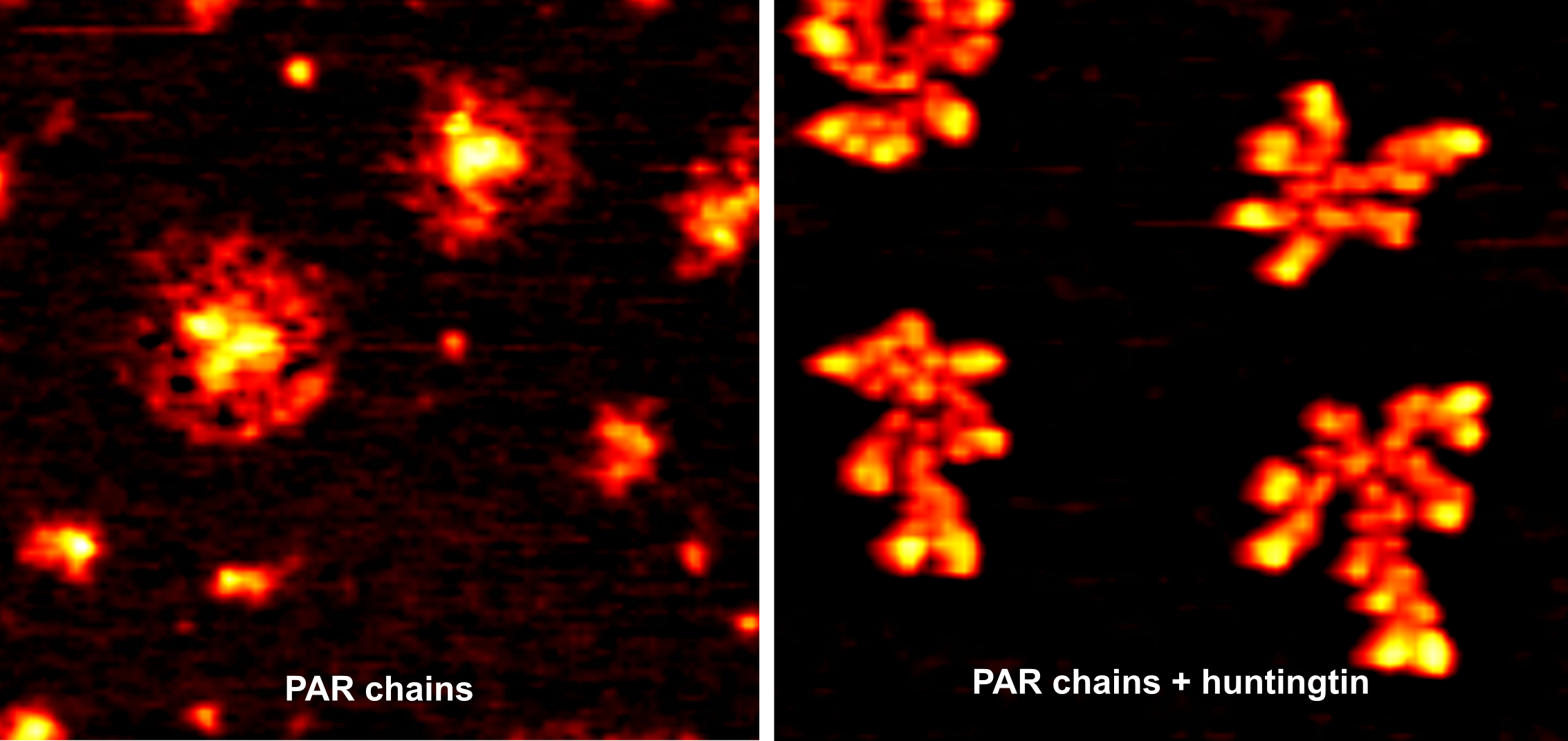McMaster researchers discover what hinders DNA repair in patients with Huntington’s Disease

Researchers with McMaster University have discovered that the protein mutated in patients with Huntington’s Disease doesn’t repair DNA as intended, impacting the ability of brain cells to heal themselves.
The research, published in PNAS on Sept. 27, 2024, found that the huntingtin protein helps create special molecules that are important for fixing DNA damage. These molecules, known as Poly [ADP-ribose] (PAR), gather around damaged DNA and, like a net, pull in all the factors needed for the repair process.
In people with Huntington’s Disease, however, the research found that the mutated version of this protein doesn’t function properly and isn’t capable of stimulating PAR production, ultimately resulting in less effective DNA repair. The study builds off a discovery researchers with McMaster’s Truant Lab published in 2018, which first detailed the huntingtin protein’s involvement in DNA repair.
“We looked at the PAR levels in the spinal fluid from Huntington’s Disease patients and expected it would be higher due to the higher levels of DNA damage, but we actually found the opposite,” says lead author and McMaster research associate Tamara Maiuri. “The levels were quite a bit lower and not only in Huntington’s Disease samples, but also in people who carry the gene but aren’t yet showing outward symptoms.”
This was an unexpected discovery because researchers have previously found PAR levels to be elevated in patients with other neurodegenerative disorders like Parkinson’s and Amyotrophic lateral sclerosis (ALS).
Huntington’s Disease is a genetic disorder that affects the brain and causes the gradual deterioration of nerve cells. For children of parents who have Huntington’s Disease, there’s a 50 per cent chance they will inherit the gene.

Future study on Huntington’s and cancer research
This discovery has a unique connection with cancer research. Ray Truant, senior author of the study and professor with McMaster’s Department of Biochemistry and Biomedical Sciences, says there are drugs that stop PAR production called PARP inhibitors that are used as cancer treatments.
Truant says this may explain a long-standing observation that carriers of the Huntington’s Disease gene have significantly lower rates of cancer and may confer an evolutionary advantage in the human population, by avoiding early life cancer.
“One implication is that new huntingtin-level lowering drugs already in clinical trials may have utility outside of Huntington’s Disease to cancer. Based off the findings in this paper, we are working in collaboration with Sheila Singh’s lab at McMaster University’s Centre for Discovery in Cancer Research to investigate the potential further,” Truant says.
Researchers say future studies should look at different classes of FDA-approved PARP1 inhibitor drugs as they may hold promise not just for Huntington’s Disease but neurodegenerative diseases at large.
Researchers with University College London, Johns Hopkins University and the University of Toronto assisted with this study. The new McMaster Center for Advanced Light Microscopy was also utilized to image the huntingtin protein with PAR chains, giving researchers a closer look at how these molecules interact. This was done with the assistance of McMaster’s Andres Lab.
This research was supported by the Canadian Institutes of Health Research Project Grant and the Krembil Foundation, the Huntington Disease Society of America Berman Topper Career Development Fellowship and HD Human Biology Project.
Dept. Biochem, ResearchRelated News
News Listing

Brighter World ➚
Analysis: Ontario’s high-stakes bet on iGaming: Province profiting from online betting but at what cost to problem gambling?
Research
1 day ago

The power of cinema: Study shows film intervention reduces violence against children
Dept. Psych, Offord Centre for Child Studies, Research
4 days ago

